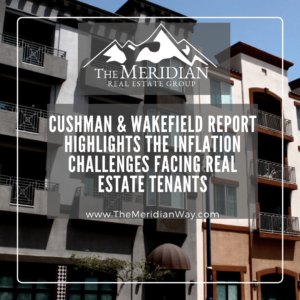 Rising interest rates could lead to reduced commercial real estate leasing for certain property types for the next several years, according to a new Cushman & Wakefield report on inflation’s impact on real estate occupiers. Most measures of inflation are at levels not seen in decades, and the report notes that the increased costs of labor, materials, energy, and other inputs for companies are unlikely to slow down anytime soon.
Rising interest rates could lead to reduced commercial real estate leasing for certain property types for the next several years, according to a new Cushman & Wakefield report on inflation’s impact on real estate occupiers. Most measures of inflation are at levels not seen in decades, and the report notes that the increased costs of labor, materials, energy, and other inputs for companies are unlikely to slow down anytime soon.
A significant imbalance between labor supply and demand has led to shortages across multiple sectors, leading to fast wage growth, one of the inflationary challenges that real estate tenants face. Real estate rent growth is a lesser problem for tenants, though. The report says real estate costs are primarily driven by local market conditions, as rent growth is a function of local fundamentals and vacancies more so than national or local inflation pressures. But costs associated with buildouts have risen sharply, and construction labor shortages create challenges for tenants. “Planning further in advance is more important than ever,” Cushman & Wakefield’s report advises.
Wage growth and retaining employees is perhaps real estate tenants’ most significant challenge right now. Labor costs for real estate occupiers are rising more quickly than any time in recent memory, with median wage growth in the first quarter of 2022 spiking 6 percent from a year earlier. Escalating labor costs may not ease as quickly as other forms of inflation unless a recession happens, which some are ominously predicting. Either way, the economic climate for real estate occupiers from office to retail is tumultuous at the moment, and it will probably stay that way for the time being.
Thank you to Propmodo for this article. To read more, click here!